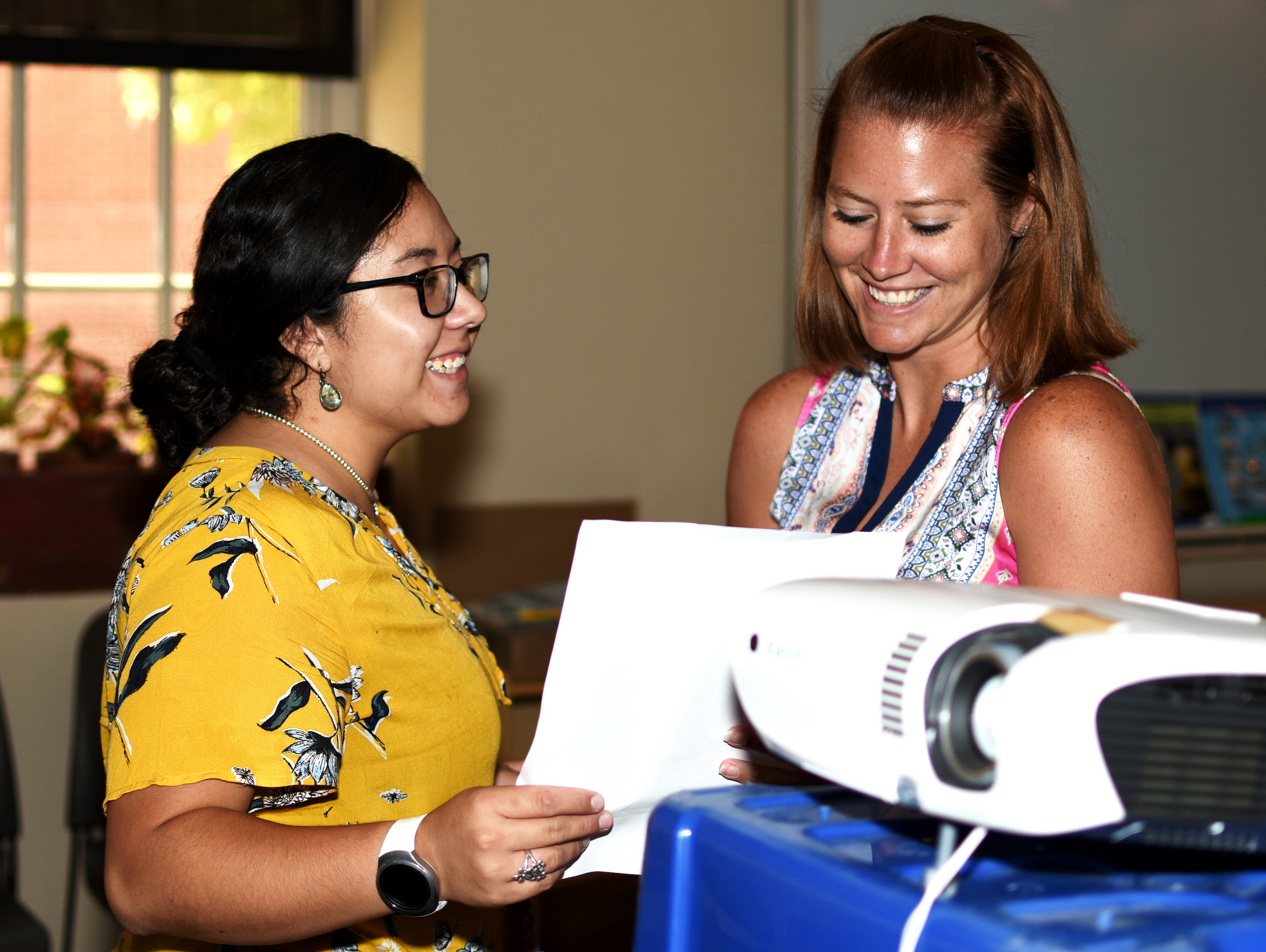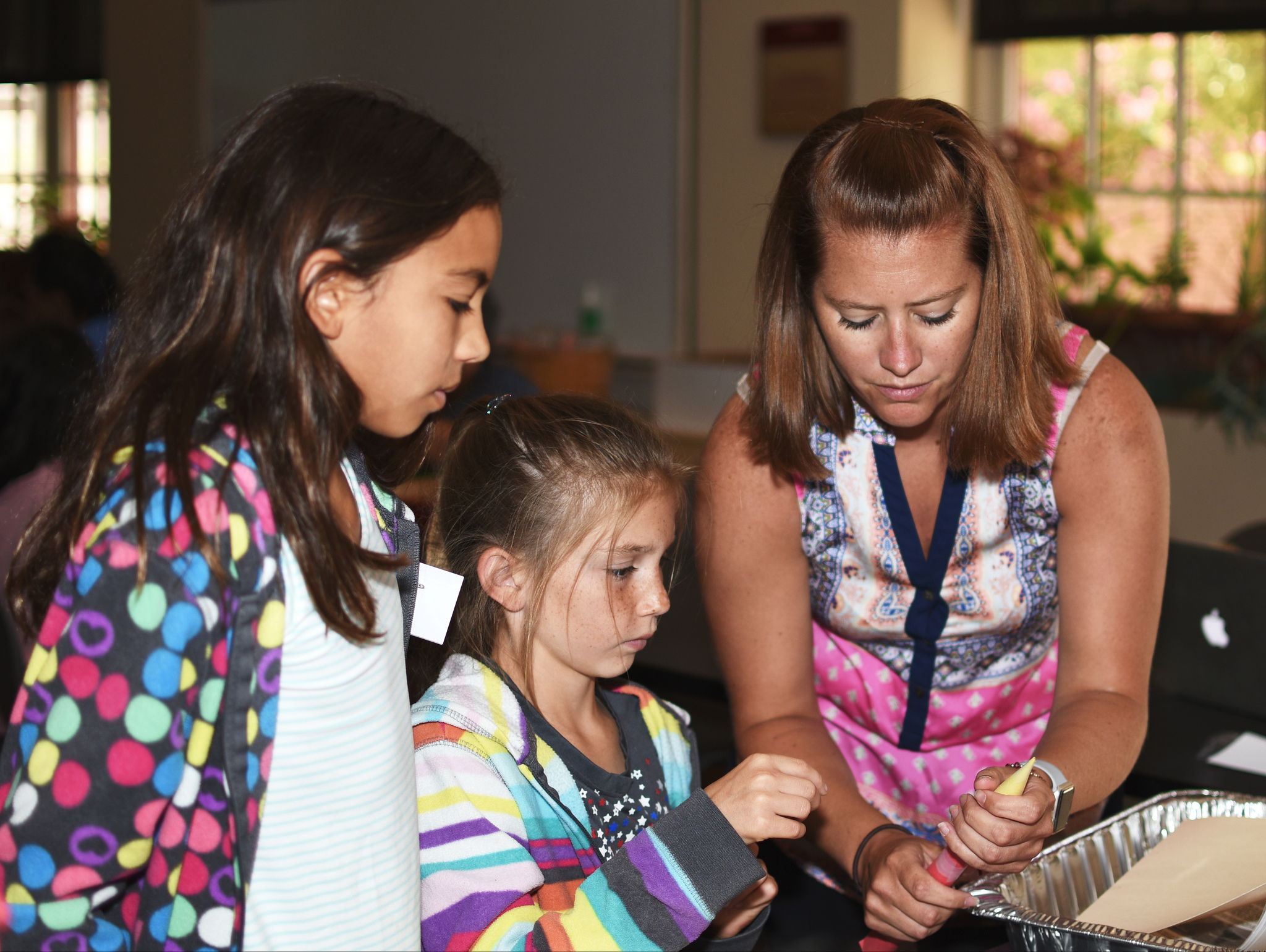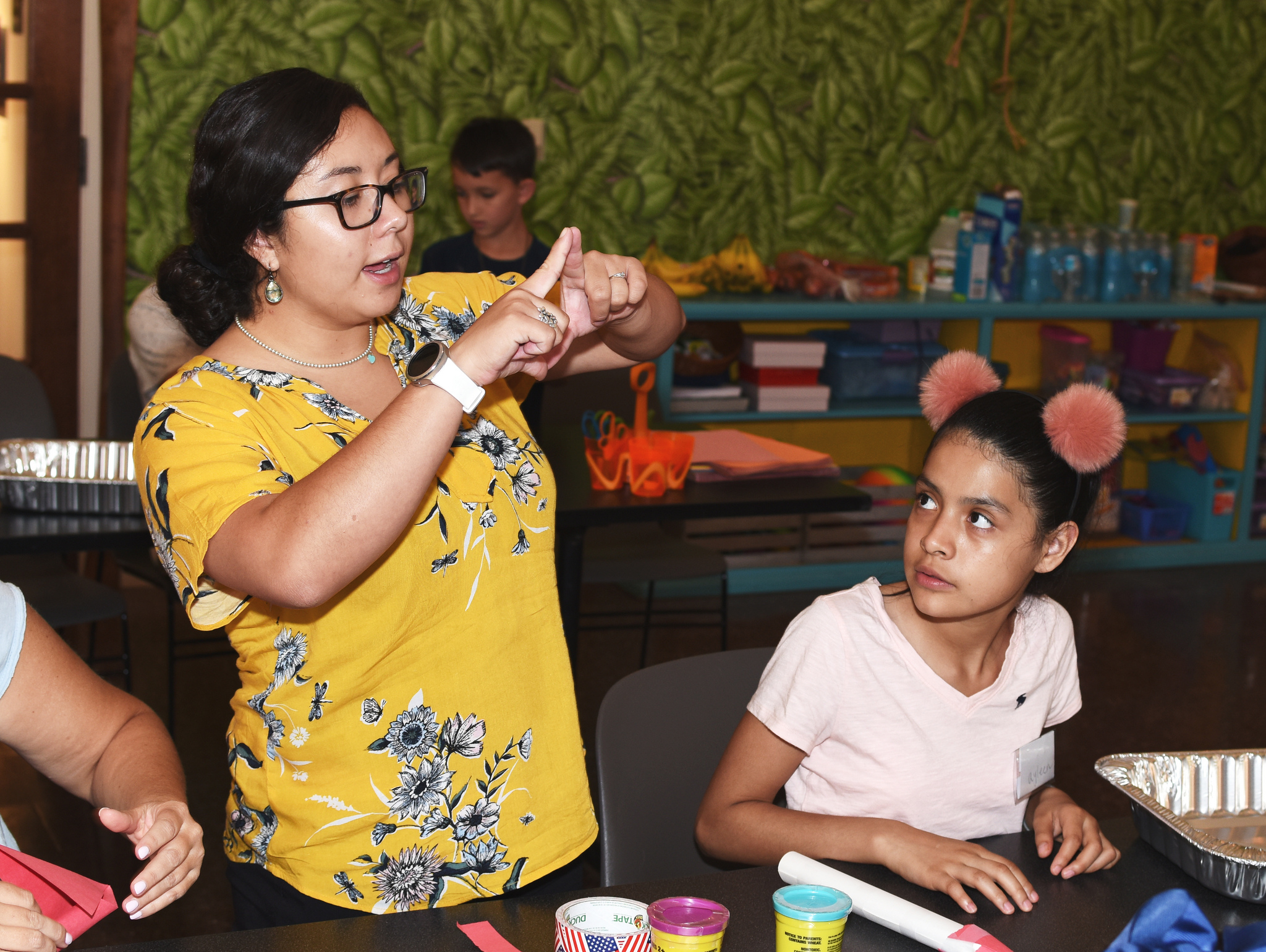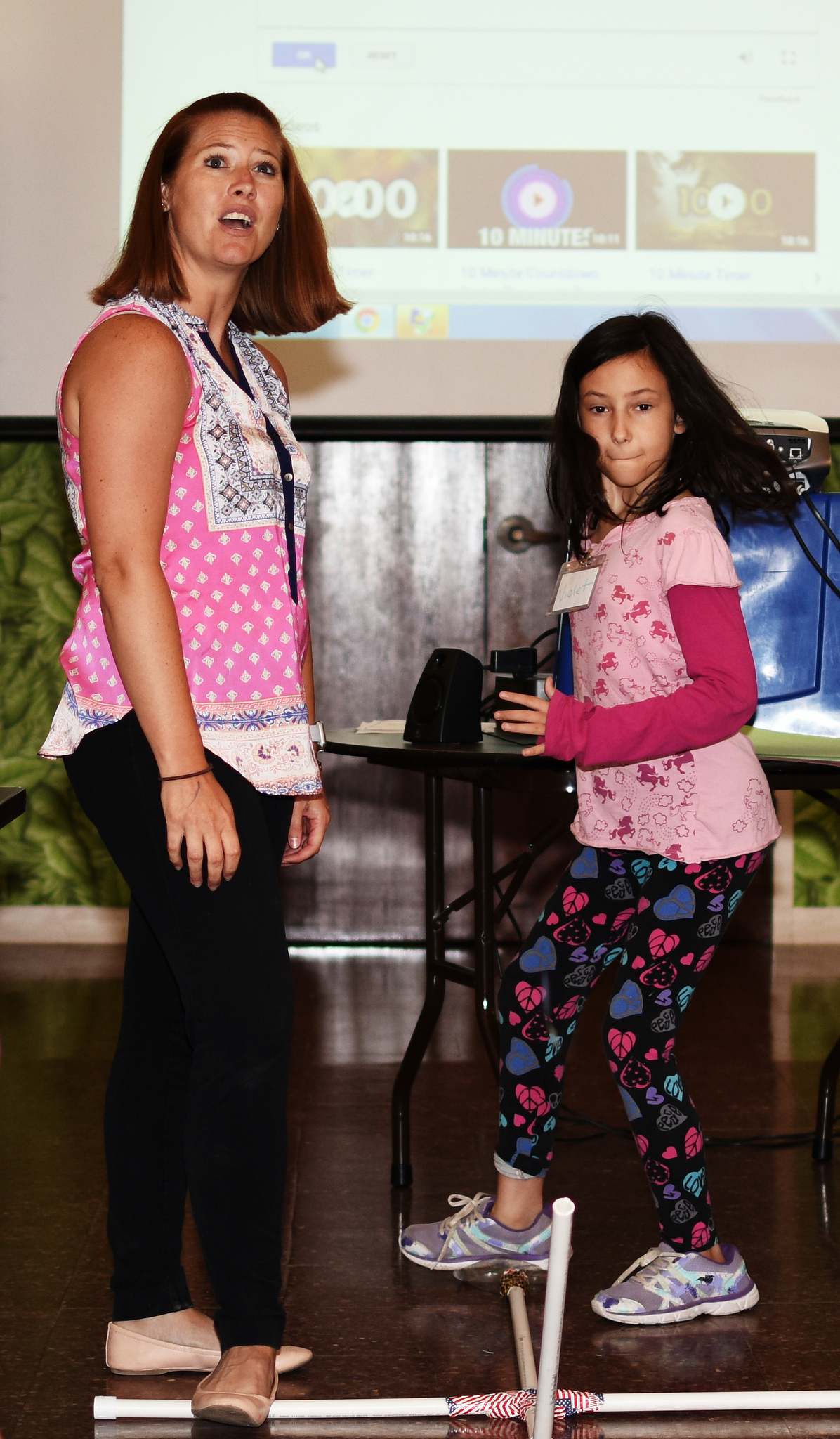
• by Jennifer Miller | Sul Ross Education Department •
Bites of food mingled with bites of knowledge on Wednesday, June 27, as the Sul Ross State University Education Department hosted a “Snack and STEM” at the Museum of the Big Bend in Alpine.
The Science, Technology, Engineering, and Math (STEM) event showcased the newly acquired instructional skills of recent Sul Ross graduates, Rebecca Garcia, Alpine, and Samantha Banegas, Alpine. The duo, along with fellow recent grad Elizabeth Livingston, Arlington, attended the NASA professional development program June 10-15 at Johnson Space Center in Houston.
Before an audience of students, parents, and educators, the NASA-educated Lobos covered topics such as rocketry, the physics of flight, the design process, and the scientific processes of volcanic formation.
NASA designed their educator professional development program to help beginning educators like Garcia, Banegas, and Livingston learn methods to improve classroom STEM instruction while using NASA assets and resources.
Having now both learned and taught such classroom instruction, Banegas, a future third-grade teacher at McKinney ISD, believes the activities allow students to engage in the complete scientific process.
“They experience trial and error and the benefits of learning from failure,” she said.

Livingston, a future elementary teacher, added that the program’s benefits are not only for jobs like “NASA scientist” or “NASA engineer” but could help today’s students train for a wide variety of professions.
“NASA hires photographers, social media managers, digital designers, educators, welders, machinists, and electricians just to name a few,” she said. “And all of these jobs could utilize STEM problem solving.”

And STEM isn’t just about making people smarter.
Garcia, a graduate research assistant in the Sul Ross Education Department, feels that STEM’s promotion of scientific literacy will also bolster global citizenship.
“STEM is versatile. It’s more than just math and science,” she noted. “STEM uses skills like writing and literacy to help students apply scientific thinking in their lives and to positively impact their fellow citizens.”
The educator professional development program attended by Garcia, Banegas, and Livingston is administered by the NASA STEM Educator Professional Development Collaborative, which is a project led by Texas State University in collaboration with NASA.

